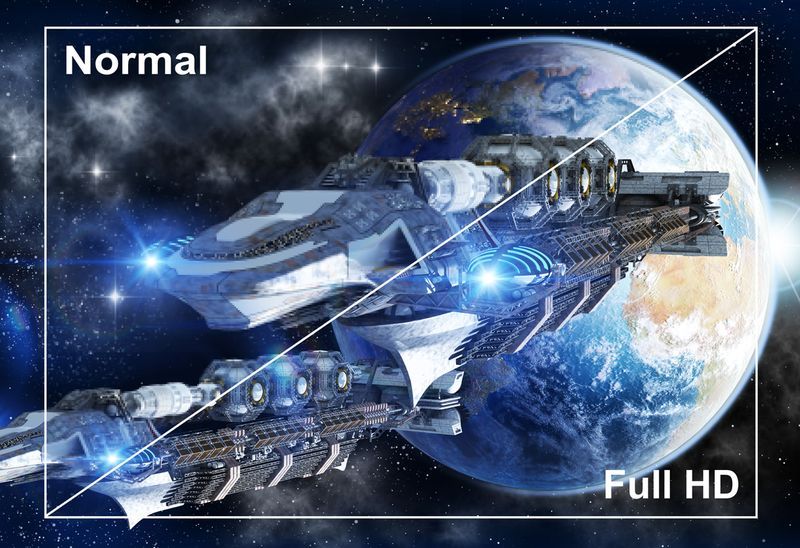Over the years, I am sure you have noticed the advancement in audio visual technology, especially in the television line. At one point we had the CRT TVs with the bulging back, which were replaced with flatter screens and better styled sets. But just when you think that you are keeping up with acronyms, things change. The standards developed by TV manufacturers are sometimes confusing. The differences between HD ready, HD, FHD, SUHD and UHD are not always clear to an average person. Recently, some brands have also adopted additional features that make them stand out.
Let’s try to make sense of modern TV sets and their acronyms!
HD ready
HD ready (high definition ready) describes a TV with a definition of 720p+ that accepts certain inputs such as HDMI or DVI. A 720p display may appear less sharp than a 1080p display. The difference will become more noticeable as physical display size increases and the distance between the viewer’s eyes and the set decreases. Such displays do not have a built-in HD tuner; they require a connection to a high-definition content device which drives the signal. In other words, they work like a monitor.
For a TV to qualify as HDR:
- The TV needs to be capable of 720 horizontal lines of resolution
- The TV must also accept inputs such as HDMI or DVI
HD
HD (high definition) simply means the device has a higher than standard resolution. HD images have more pixels per square inch, which means that HD images can show much finer detail than SD images. As the resolution increases, the quality of the image improves and so will the price of the unit. HD is currently the entry level for TV in South Africa.
FHD
FHD is used to describe a TV with a definition of 1080p. The acronym FHD stands for full high definition. Unlike the HDR, FHD has a built-in tuner that receives HD over-the-air transmissions. The term full HD is used for marketing purposes. Hence, FHD does not indicate any particular quality besides 1080p. Also it is important to note the full HD is mostly offered on large TVs, at least 32”, while most TVs that are under 32” are HD ready. So, the primary difference between FHD and HDR lies in connection.
UHD and SUHD
UHD (ultra high definition) is a term that manufacturers use to describe TVs with a very high resolution of 3840×2160. SUHD is the term Samsung uses to differentiate their highest end UHD TV sets. LG, Sony, and other brands have different codes for their high end TVs. There are arguments that the “S” in SUHD stands for super, spectacular, or even Samsung. But according to Samsung, it doesn’t stand for a specific word; the “S”, they say, is an identification for products that “change the game”, such as the 2015 SUHD TV portfolio of the Galaxy S.
So what makes an SUHD TV different from other TVs? Well, SUHD TVs support ultra wide colour gamut which increases the range of hues that can be displayed by the TV. So the primary difference that make SUHD sets stand out is the range of colour displayed, as it is more refined, cleaner and more defined when compared to UHD and other 4K sets. The line up in SUHD TVs has a brighter backlight that can hit up to 1000 nits brightness and produces deeper backs.
Now that you know the differences, why not upgrade your TV. Check out our range of high-end TV sets.










